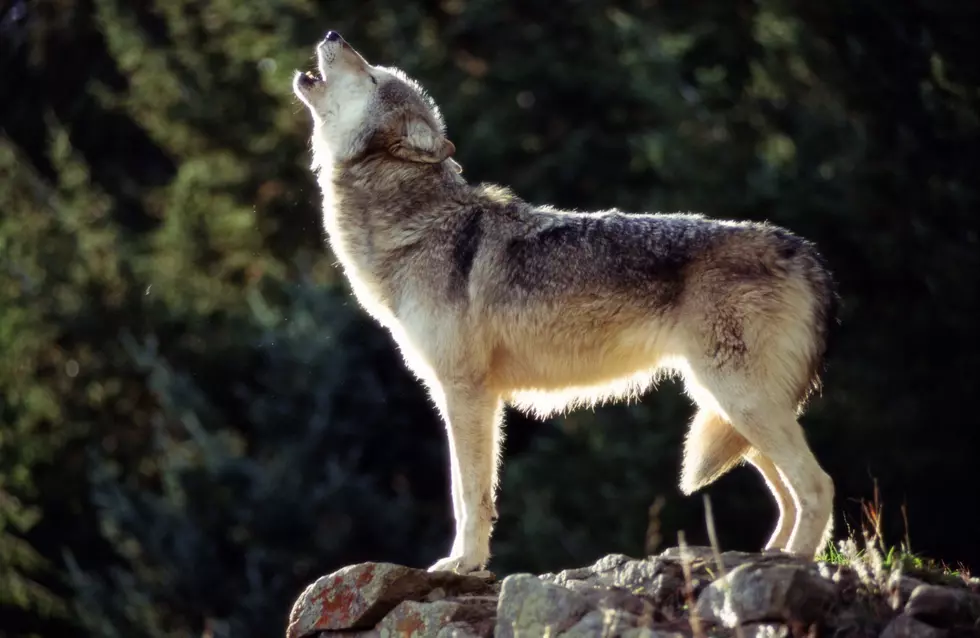
Groups sue state of Montana to stop wolf season
(Missoula Current) With Montana’s hunting season underway, two groups are suing the state of Montana to stop the wolf hunting and trapping season until the state can show how much killing is justified using scientific information.
The groups also want a ban on wolf killing in and around federal land.
WildEarth Guardians and Project Coyote filed a complaint last week against Montana Fish, Wildlife & Parks, its commission and the state of Montana, asking a Lewis and Clark County judge to place a stop on the current wolf season.
In particular, they object to the FWP commission’s Aug. 21 approval of a wolf season that allows every wolf license holder to take up to 20 wolves until 456 wolves are killed.
The plaintiffs say that would amount to killing roughly 40% of the state’s wolf population during this season, which is not scientifically justified.
“Montana’s politically-motivated wolf slaughter is illegal and completely unmoored from scientifically sound wildlife management,” said Lizzy Pennock, WildEarth Guardians carnivore coexistence advocate in a release. “Trophy hunting for wolves does not put food on anyone’s table, make elk populations healthier, or protect livestock. Montana’s pile of wolf carcasses stacks higher every day, and we are done waiting for somebody else to act.”
The plaintiffs make five claims against the state. The first is that the state has violated its constitution by not managing wolves wisely for the benefit of the public and future generations under the Public Trust Doctrine, which states that wildlife belongs to the people.
Two claims are related to FWP’s wolf management plan. One takes FWP to task for changing the method it uses to estimate wolf populations without going through a public process. The other claims the wolf plan is out of date, so the new quotas and regulations are not justified.
The last two deal with federal land and say the state’s harsh regulations interfere with management policies on land managed by the U.S. Forest Service, National Park Service and Bureau of Land Management.
In 2021, the FWP commission eliminated kill quotas of two to five wolves in districts around national parks, choosing instead to impose limits by larger FWP regions. That led to the deaths of about 20 Yellowstone Park wolves, including yearlings and collared park wolves.
“While the rest of the world is trying to reverse our current course causing the mass extinction of life, Montana seems hellbent on flaming the proverbial fires,” said Michelle Lute, carnivore conservation director for Project Coyote, a project of Earth Island Institute. “Science and Indigenous knowledge have already taught us that we slaughter wolves to our own detriment.”
Since 2011, when Congressional action removed gray wolves in the northern Rocky Mountains from the endangered species list, Montana has managed its wolf population using limited hunting and trapping based on monitoring and science. By the time wolves were delisted, the Montana population had grown to an estimated 950 wolves, but limited hunting and trapping held the population to about 800 between 2015 and 2019, according to FWP records.
But then, Republicans took control of both the Legislature and the Governor's Office, and the 2021 Legislature passed several bills on party-line votes that expanded the 2021-2022 wolf season. The bills, mostly sponsored by Rep. Paul Fielder and Sen. Bob Brown, both Thompson Falls Republicans, mandated a longer wolf season, trapping with snares, baiting, and night hunting with lights.
As justification, Fielder said the statewide population shouldn’t be any larger than the minimum population that was required for delisting: 300 individuals or enough to allow for 15 breeding pairs.
He also claimed that wolves in northwestern Montana were destroying the elk herds. However, there’s no scientific evidence to prove that. Region 1 wildlife managers don’t have recent dependable counts on the herds and have said that populations are low in some areas because northwestern Montana doesn’t have good habitat. Add to that an increasing human population and more recreational use in elk habitat, and there are several reasons for low elk populations.
Wolf advocates were particularly worried about the effect of lightweight snares on the wolf population in addition to pets. But FWP put limits on snares and trapping to avoid the incidental catch of endangered species like grizzly bears and Canada lynx.
As a result, the reported number of wolves killed during last season wasn’t higher than average. Hunters took 148 wolves while trappers took 125 for a total of 273 wolves for the 2021-2022 hunting and trapping seasons, according to a FWP annual report released in August.
When Fielder heard those numbers during a September interim Legislative committee meeting, he expressed annoyance and vowed to introduce more anti-wolf bills in 2023.
“It was stated on the floor last session that this is not about ethical or fair chase, it was about reducing the number of wolves. Management starts with M-A-N, man. We’ve got to take control of things,” Fielder said in September. “As we go into this next Legislative session, we’ve got to look at how we can meet the intent of the Legislation that was passed in 2021."
WildEarth Guardians was one of several organizations that sued to restore endangered species protection to gray wolves outside the Northern Rocky Mountains after the Trump administration removed protection in November 2020.
Part of the plaintiffs’ justification was the fact that Montana and Idaho had passed legislation to kill more wolves. In February, a California federal judge restored those protections.
Contact reporter Laura Lundquist at lundquist@missoulacurrent.com.
